Glossary
Ablation
Any mass loss from a glacier
Accumulation
The addition of new snow or ice to a glacier
Adaptation
A gradual change in an organism that enables it to survive in a particular environment.
Basalt
Rock formed by cooled, solidified magma that forms part of the Earth’s crust.
Bedrock
Underlying layer of rock
Behavioural adaptation
A thing that organisms do to survive in a particular environment, such as the way they feed, breed or move.
Calving
The process by which ice breaks off from a glacier
Continental plates
Pieces of the Earth’s crust that make up the world’s continents. These plates are thicker and older than oceanic plates, formed more than three billion years ago.
Convection currents
Heat deep inside the Earth that drives the movement of the Earth’s plates nearer the surface.
Crust
The Earth’s outer shell, made of solid rock that is between 7-70 kilometres thick.
Glacier
A large body of compressed snow and ice that moves slowly outwards and downwards under the pressure of its own weight.
Haemoglobin
Protein in red blood cells that transports oxygen around the body.
Ice sheet
Large continental masses of glacial ice
Ice shelf
Thick floating platform of ice that forms where a glacier or ice sheet flows down to a coastline.
Mantle
The layer of the Earth’s interior that is made of mostly solid rock. The Mantle extends from the bottom of the Earth’s crust down to 2,900 kilometres deep inside the Earth.
Mantle Plumes
A rising mass of molten rock (magma) from the Mantle, deep inside the Earth.
Metabolism
Chemical changes in the cells of an organism that release energy for it to live and grow.
Nutrients
Foods or chemicals that an organism needs to live and grow.
Oceanic crust
The outer layer of the Earth’s surface that lies beneath the oceans. As oceanic crust is denser than continental crust it generally lies below sea level.
Photosynthesis
The chemical process that enables plants and some bacteria to capture the sun’s energy and turn it into food and oxygen. Without photosynthesis there would be no life on Earth.
Physical adaptation
A changing characteristic of an organism that enables it to survive in a particular environment. These changes usually happen very gradually over generations.
Phytoplankton
Microscopic plants that float near the ocean’s surface in order to capture the sun’s energy and turn it into food. Phytoplankton are the base of the entire food web in the world’s oceans.
Plate Tectonics
The theory that explains the movement of the Earth’s plates.
Primary consumer
A vegetarian organism in the second level of a food chain that feeds off the plants in the first level.
Producers
Organisms such as plants and trees that make up the first level of a food chain. They make their own food from the sun’s energy.
Snout
End of a glacier
Snow melt
Water produced by melting snow
Trophic level
The feeding position in a food chain. Most food webs are made up of four trophic levels, from the plants that make their own food at the bottom level to the animals that eat other animals at the top level in a food chain.






